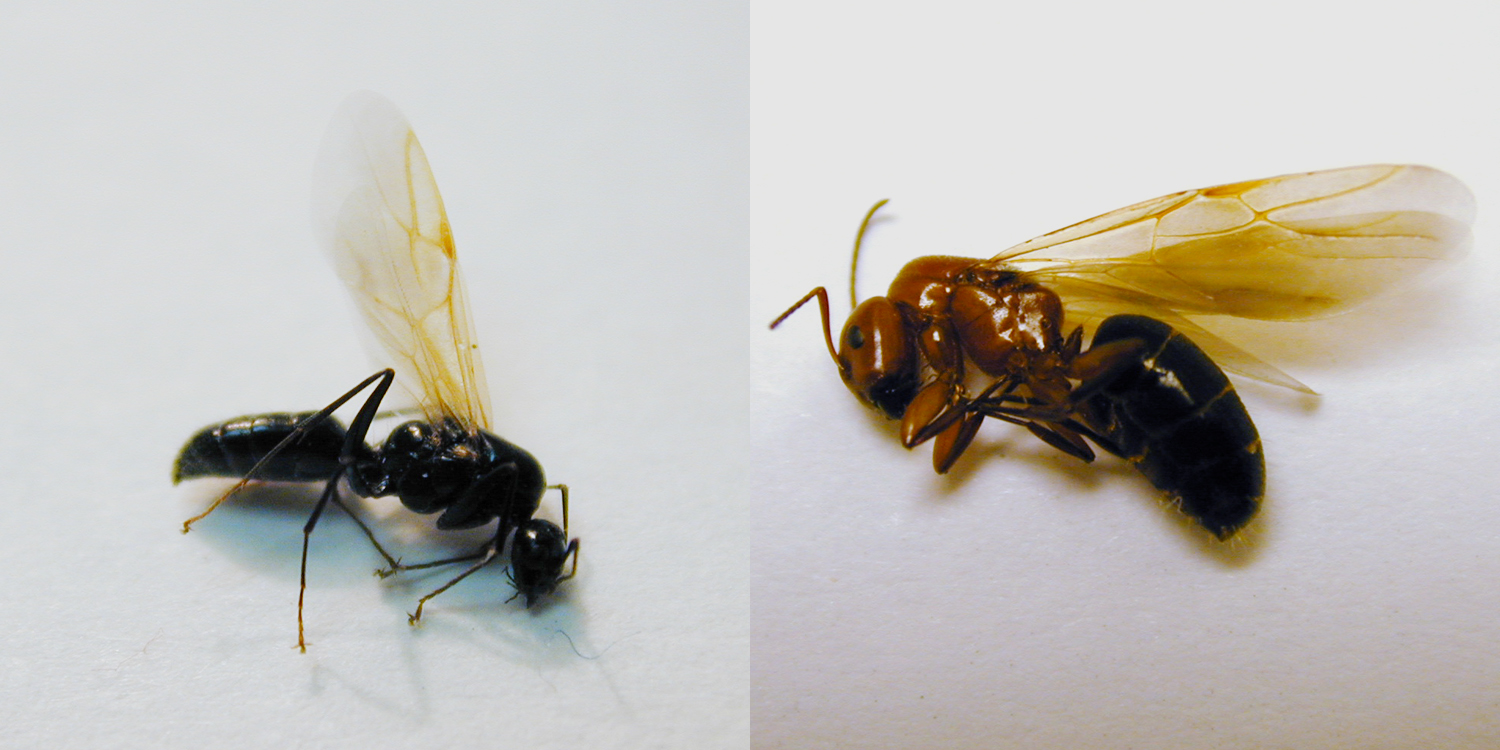
Male (left) and female carpenter ant swarmers. Note the pinched waist that distinguishes these insects from termites.
Many social insects periodically do something called “swarming”. Swarming occurs when reproductively mature, but unmated, kings and queens leave the nest to mate. These mating couples are winged and are referred to as alates, or swarmers. The earliest swarmers to emerge in the winter are carpenter ants.
This week my youngest daughter, home for the weekend for a visit, informed her entomologist dad that the upstairs shower was covered with large ants. A quick inspection confirmed that we were being invaded by carpenter ants. A few years ago we remodeled this particular shower, tearing out sheet rock and insulation and encountered carpenter ants living in the surrounding walls. We throughly cleaned out what we could and sprayed the walls down with a residual insecticide before reinstalling insulation and more water-resistant Hardyboard® in the new shower stall. Apparently they are back.
Carpenter ants are relatively large for ants, 1/4 to 1/2 inch-long. They may come in different colors, but are usually red or black, or a mixture of the two colors (see pictures). They may or may not have wings. In my home I only spotted the wingless worker ants, but I suspect the swarmers will show up soon. Dozens, even hundreds of swarmers may emerge from an indoor carpenter ant nest.
In some parts of the U.S. carpenter ants are important wood-destroying pests–not something that any homeowner wants to see in their house. But here in Texas our carpenter ants are a little less threatening. They certainly can be a nuisance through their presence, and for the little piles of debris they often deposit on windowsills and floor near their nests. But they do not do significant damage to 2×4 studs or other structural wood.
Unfortunately, carpenter ants are always difficult to treat and eliminate completely from the home. For my part I plan to inject an insecticide into the gap in the shower grouting from which they obviously emerged, reseal the grout and not lose much sleep over the incident.
If you discover carpenter ants in your home, look for the hole where they are emerging. This may or may not mark the exact location of the nest, but it will be close. For most people, calling a professional is the best option for control. If you choose to try the DIY route, you can either seal up the hole and do nothing, or attempt to treat the hole with an aerosol insecticide labeled for use indoors against ants and then seal the hole. You may be fortunate, and eliminate the colony in this way, or you may eventually have to resort to professional assistance. In any case, doing nothing to the ants will not likely result in any serious damage to the home…just some nuisance ants emerging from time to time.
For more information about these ants, see publication E-2001 on carpenter ants, or the publication on swarming insects indoors, Ent-2012.